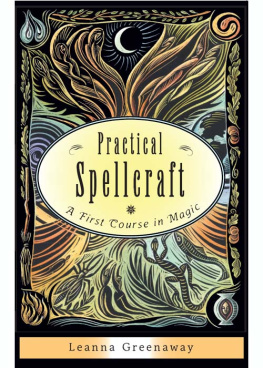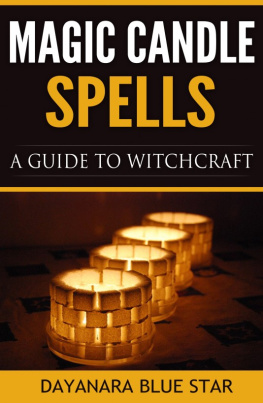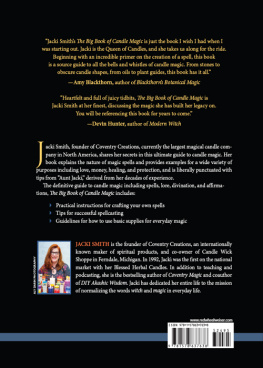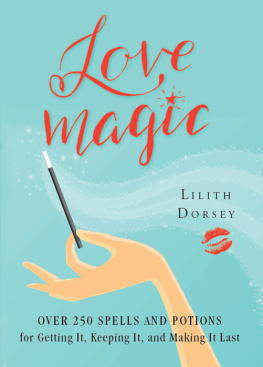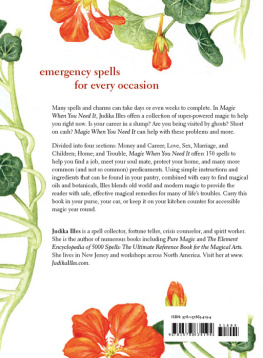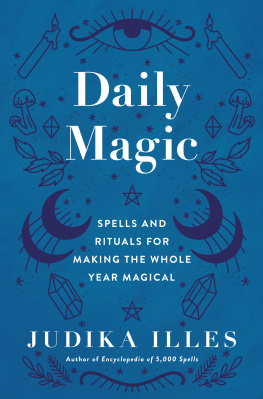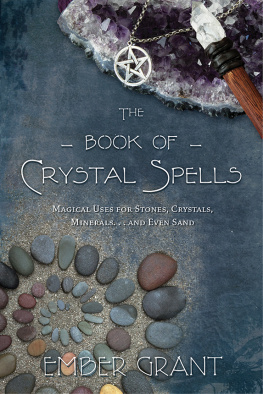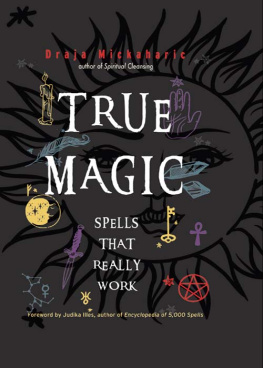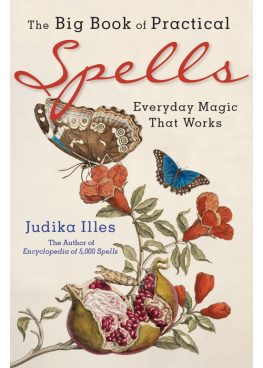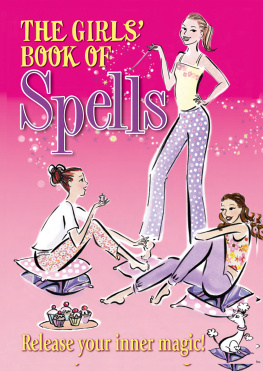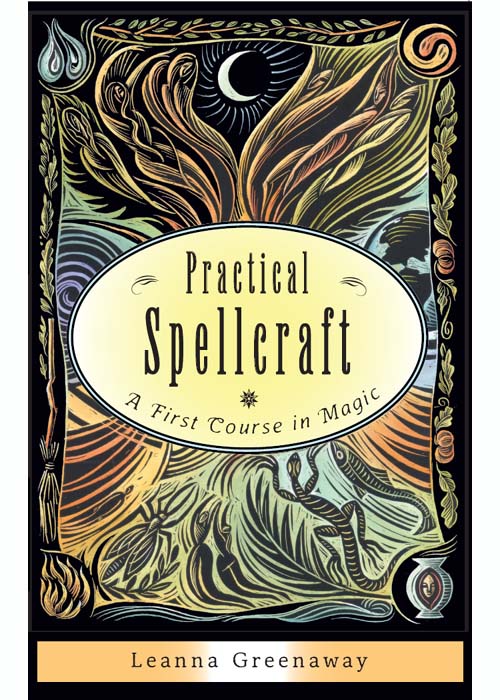
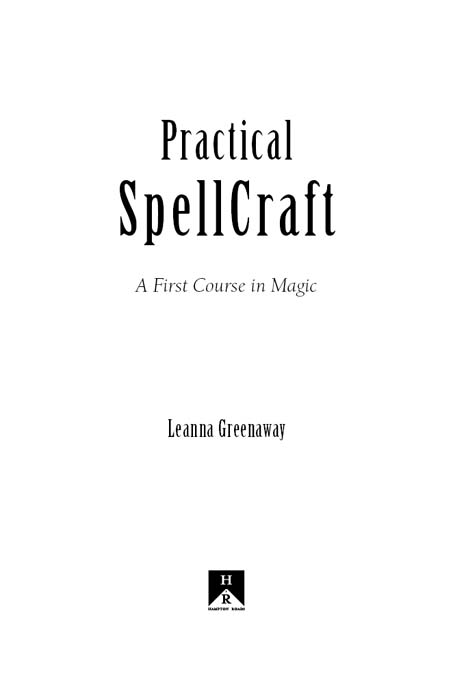
I would like to dedicate this book to Mamma Witch, who for many years has been my inspiration and my salvation. May you continue to wave your wand.

Copyright 2003, 2017 by Leanna Greenaway
All rights reserved. No part of this publication may be reproduced or transmitted in any form or by any means, electronic or mechanical, including photocopying, recording, or by any information storage and retrieval system, without permission in writing from Red Wheel/Weiser, LLC. Reviewers may quote brief passages. Previously published in 2003 as Practical Spellcraft by Zambezi Publishing Limited, Devon, UK and Sterling Publishing Co., Inc., New York.
Cover design by Jim Warner
Cover illustration Jennifer Hewitson
Hampton Roads Publishing Company, Inc.
Charlottesville, VA 22906
Distributed by Red Wheel/Weiser, LLC.
www.redwheelweiser.com
Sign up for our newsletter and special offers by going to
www.redwheelweiser.com/newsletter/.
ISBN: 978-1-57174-754-9
Library of Congress Cataloging-in-Publication Data
Names: Greenaway, Leanna, author.
Title: Practical spellcraft : a first course in magic / Leanna Greenaway.
Description: Charlottesville : Hampton Roads Pub., 2017. | Originally published: New York : Sterling Pub. Co., c2003. | Includes bibliographical references.
Identifiers: LCCN 2016044538 | ISBN 9781571747549 (5.5 x 8.5 tp : alk. paper)
Subjects: LCSH: Witchcraft. | Charms. | Magic.
Classification: LCC BF1566 .G724 2017 | DDC 133.4/3--dc23
LC record available at https://lccn.loc.gov/2016044538
Printed in the United States of America
M&G
10 9 8 7 6 5 4 3 2 1
www.redwheelweiser.com
www.redwheelweiser.com/newsletter
Contents
1
Observations

F or centuries, people have considered that spellcasting has something disturbing or sinister attached or to it. When one considers fairy tales that date back over the years, the witch is observed as a wart-ridden old woman, wearing a crooked black hat, with a cat or familiar by her side and a big bubbling cauldron before her. It is only now, in the 21st century, that society is starting to see that witchcraft was (and still is) just another religion or way of life. The Harry Potter mania has opened up many people's minds to Wicca, and, although some still consider it a sinful practice, many are keen to explore this interesting, gratifying, and rewarding faith.
It is not easy to give an accurate date for the origins of Paganism, but it is certainly known to be pre-Christian. It is amusing to consider, when we come up against the sceptics of society, that each and every one of us has practiced witchcraft or Pagan rituals at some time in our lives. Shocked? Well it's true. We have all been introduced to superstition at some stage of our lives, and many of the old wives' tales from years gone by emanated from the ancient Pagans. The following are a number of well-known examples.
Present-Day Rituals That Have Pagan Roots
THE BIRTHDAY PARTY
The child can expect a gathering of people at his birthday party, a cake, and a number of colored candles, and he is encouraged to make a wish while blowing out the candles. This is one of the oldest known Pagan traditions and is said in many modern manuals to be the first form of candle magic that a child practices. Later in this book, we will cover the subject of candle rituals at length.
THE WEDDING
The traditional wedding ceremony is another ancient Pagan or Wiccan custom. In a Pagan ceremonyor as it is more commonly known, a Handfastingthe bride and groom initially tie the knot for only a year and a day. The expression to tie the knot comes from the ritual that is performed by the couple, during which they would tie and knot a rope around their hands, symbolically binding the two lovers. The period that the couple spends together settles whether or not they are compatible. If, after the year and a day, they remain in love, they then go on to hold another ceremony, this time making a permanent commitment to each other. This custom has become the engagement or betrothal that precedes a wedding.
THE CEREMONY
A High Priest or a High Priestess performed the ceremony, usually outdoors or in a specified place of worship, such as a church. Three hundred years ago, Pagans and Christians had no option but to share their churches, so it was widely acceptable for Pagans to marry in church.
THE RINGS
Gold rings were exchanged during a wedding, and these symbolized the goddess, the wheel of the year, and the circle of life. The ring was then placed on the third finger of the left hand because it was believed that a vein ran directly from this finger to the heart. The wearing of the rings was a sign to everyone that the couple was bound together by the unity of Handfasting. This has carried over into modern practice in Christian weddings and, as we know, in the Christian faith the couple exchange rings while they make their vows.
THE ALTAR AND THE CANDLES
Most Christian churches conduct the majority of their ceremonies at the altar. In the Pagan faith, two candles (usually white) were placed on the altar and represented the male and the female. As the candles burnt down, the spirit of the flame was said to represent the spirit of the couple, and this traveled upward in the direction of the universe to be accepted by the goddess herself.
For centuries, Christians have worshiped their God by reciting prayers over a lighted candle at weddings, baptisms, and so forth, but the Pagans also deliver their invocations over candles while worshipping their gods and goddesses.
THE RICE AND THE CAKE
Once the wedding ceremony is complete, it is customary to throw rice or confetti over the happy couple. In Pagan and Wiccan weddings, the idea was to tap into the spirit of the fertile grain or seeds so that the couple could absorb it, thus ensuring that they would have a good and prosperous harvest and never starve. In ancient times, biscuits were crumbled over the heads of the couple to ensure the bride's fertility. It must have been somewhat irritating for the bride on her wedding day, having groomed herself to a high standard, then to be showered with handfuls of crumbled biscuits!
Thankfully, however, throughout the course of time, this ancient tradition has changed. In days gone by, it was fashionable for the bride and groom to slice a fruitcake, both holding the knife together and showing their love by kissing over the top of it. This was supposed to guarantee that together they would bear many children. By sharing the cake with their guests, they were indirectly sharing the magical energy of their love and passing it on to everyone present.
THE GARTER
A buckled leather garter was a mark of the witch bride's rank. The number of buckles on the garter represented the number of covens that had originated from the witch bride's, and this established her status in society. These garters were often handed down within families, passing from mother to daughter to granddaughter. This tradition has been lost over time, and now very few people actually know the true meaning of the garter; it has become just a slightly saucy part of the wedding outfit.
Next page
